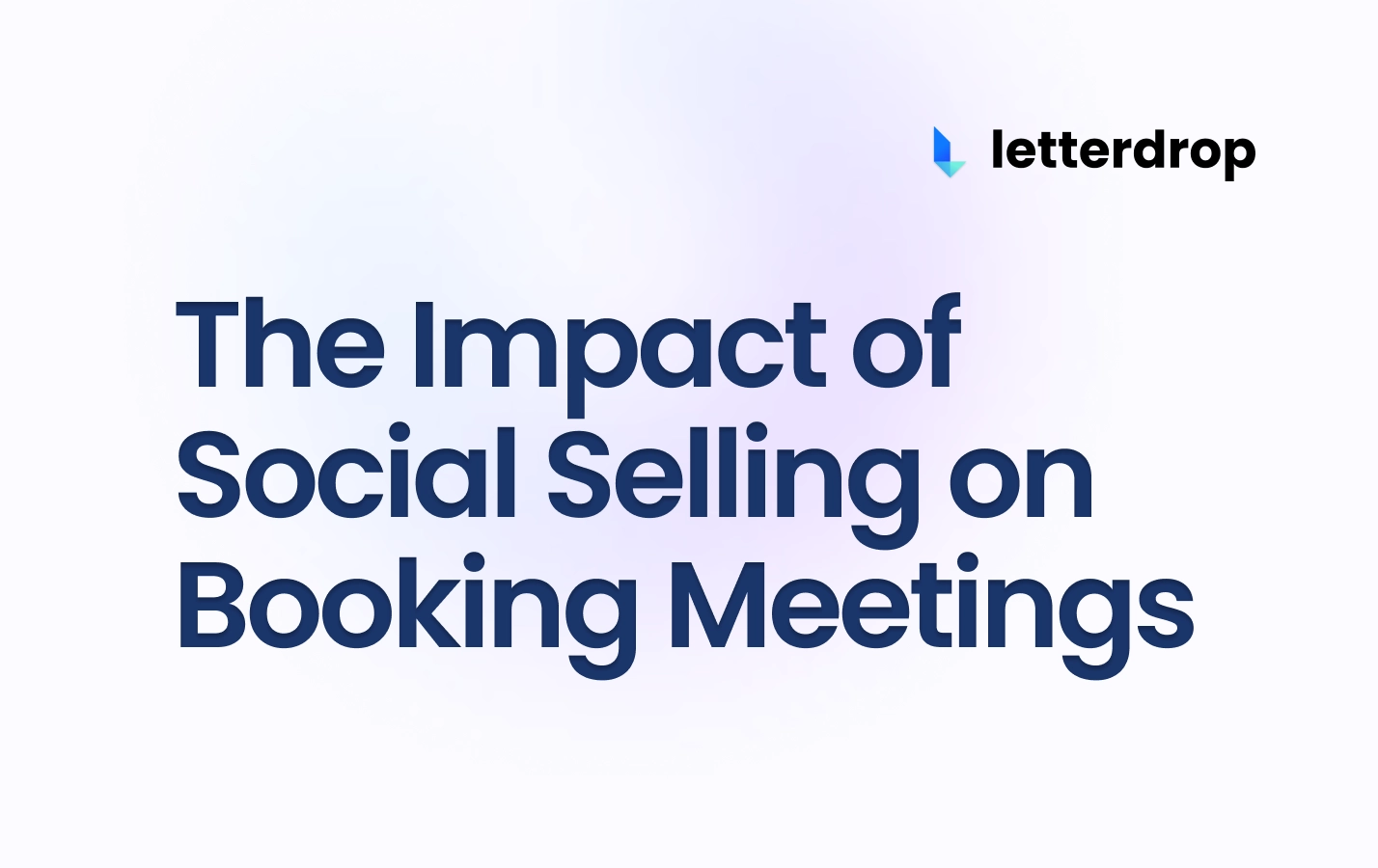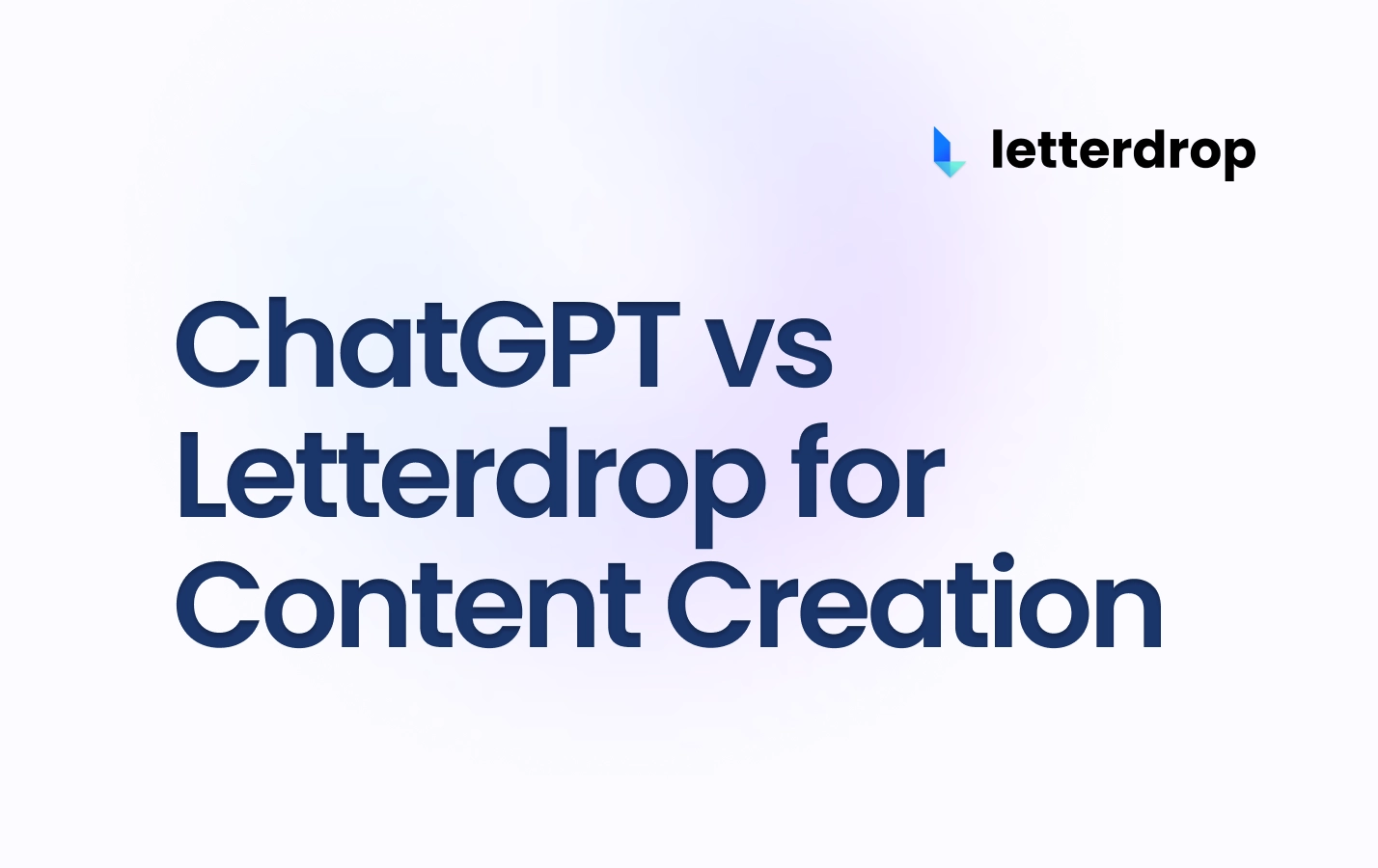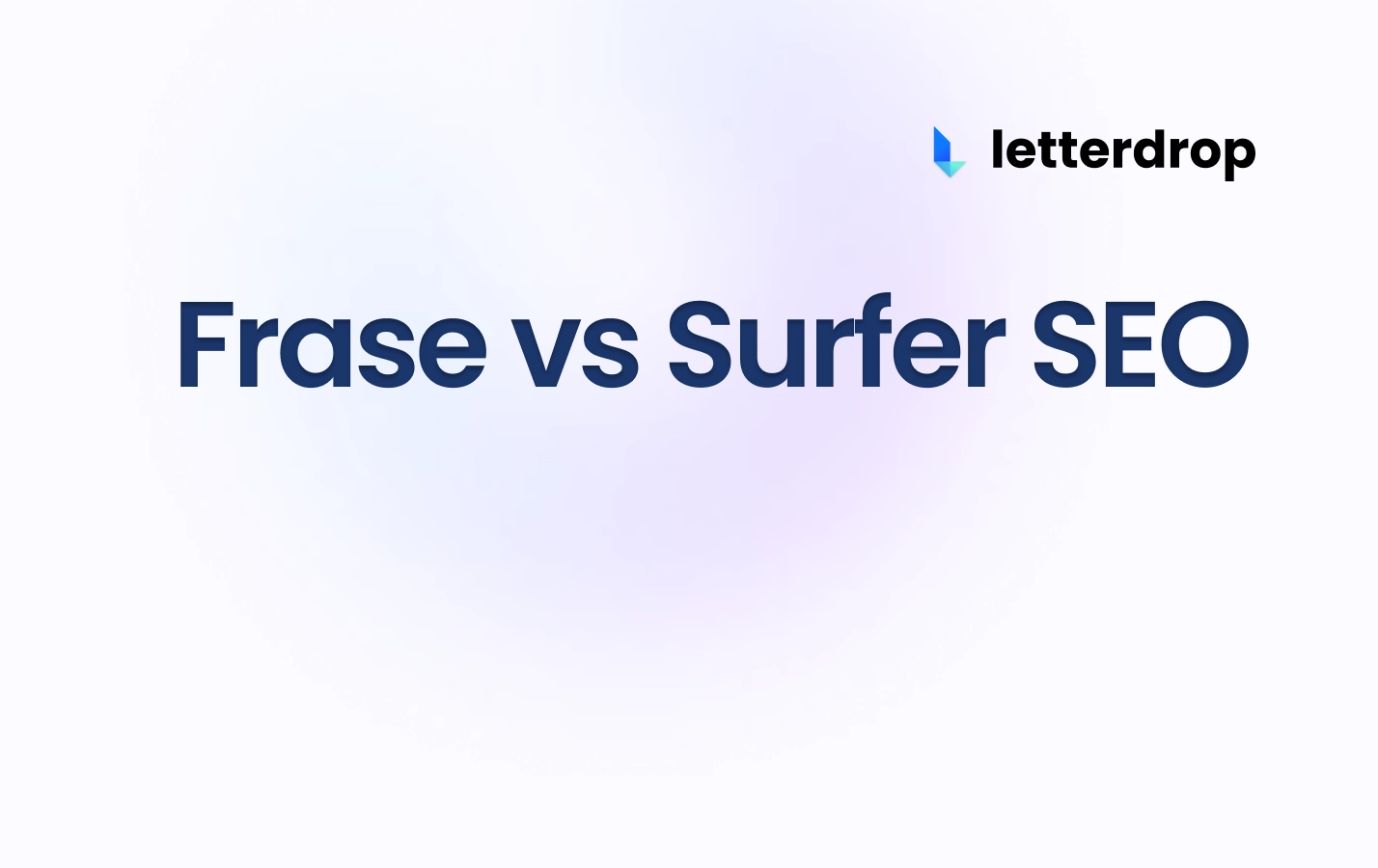How to Write a Content Outline for SEO at a SaaS Company
TL;DR:
- Creating a content outline saves time, helps with organization, and ensures alignment with clients or managers.
- Steps for writing a content outline include keyword analysis, researching the topic, defining the target audience, starting with a title, writing section headers, listing takeaways as bullet points, and reviewing with the team.
- The content outline serves as a guide for fleshing out the article and going through revisions.
It's tempting to dive right into a first draft of a blog post, but any good B2B marketer knows that a great piece of content starts with an outline. In fact, in good business writing, content is 20% writing and 80% outlining.
Outlines give you a logical structure to follow, help you stay aligned with your collaborators, and help you meet the search intent of your target ICP. Without them, you risk spending hours on articles that completely miss the mark with prospects.
That means you're missing out on ranking and driving the business results you want to see from content.
In this guide, we'll show you how to write a solid content outline to help you create compelling articles that your readers will actually find helpful.
What Is a Content Outline?
Simply put, a Content Outline, also sometimes called a Content Brief, is a detailed prototype of what your completed article will look like. It includes the logical flow of the piece, headings, bulleted lists of what will be covered, and examples.
It usually starts with a keyword or topic you want to target. From there, you "reason through" your arguments and establish flow. That's where heading structure (H1, H2, H3, and so on) can be really helpful.
Here's what an article headline structure might look like after working with an outline:
 |
Why You Should Create a Content Outline Before Drafting Your Blog Post
Creating a content outline offers several advantages:
- It saves time. Planning your article with an outline prevents writer's block and saves time, as you already know what you need to say. You can focus more on helping the reader rather than on technicalities.
- It provides clarity. Outlines help ensure your article has a clear purpose by including important topics, sub-topics, and considerations like SEO and backlinks. It also enables you to organize your thoughts and any included media.
- It helps align writers with customers and managers. For writers, an outline keeps you on the same page as any collaborators and can reduce the number of revisions you'll need. Shorter revision cycles mean a faster turnaround time for content managers, too.
- It helps answer search intent and rank for SEO. Outlines help you figure out what needs to be said to give your prospects the most value. This in turn helps rank for SEO.
Outlines cut unnecessary hours spent on articles that won't land and allow you to completely focus on helping your reader.
Without them, you'll struggle to understand how best to give your prospects the most value — and that means lower rankings and fewer qualified buyers.
How to Structure an Outline in 8 Steps
1) Do Your Keyword Research
It goes without saying that you need to know your target keywords before you can get to your outline.
It's important to remember that you should go after keywords that can actually drive conversions, either in the short term or the long term. There's no point in going after high-traffic phrases that ultimately don't do anything for your business.
There are two ways you can do your keyword research:
1.1 Use Keyword Research Tools
Tools like Ahrefs, Letterdrop, and Semrush are excellent for keyword research.
They show what people are looking for, related terms, search volume, search difficulty, possible keyword gaps, and more. This gives you a lot to work with.
Here's how to approach using them:
- Put in your primary term.
- Explore related terms and refine them with modifiers like "how," "best," and "what."
- Prioritize long-tail keywords with less competition and specific search intent. Unless you're a big site with lots of topical and domain authority, it'll be near impossible to compete for high-competition keywords.
- Don't focus too much on the estimated search volume. It's just that: an estimation. "Zero search volume" keywords and other niche terms might not have a lot of keyword data, but they are still very relevant to your audience and can drive real qualified traffic.
 |
1.2 Get Keywords Directly from Customers and Communities
Where better to get qualified keywords than from customers themselves?
- Talk to your customers and sit in on sales calls for marketing insights. You can learn so much about what customers are looking for and what they struggle with
- Be active in online communities and forums where your ICP hangs out like LinkedIn and Reddit for questions being asked within your industry
 |
2) Understand Who Exactly You're Writing For
Writing for everyone is writing for no one. You need to get really specific on your target ICP if you want to generate clicks from prospective buyers.
For example, if you're selling in B2B SaaS, you might target:
- Business owners and CxOs who are looking to buy the SaaS product (either from you or your competitors)
- Managers whose job it is to get software products for the company
- Decision-makers of an organization who want to know whether a product is worth buying
Developing buyer personas can be really helpful here. Here's how to get to know who you're writing for:
- Talk to customers. Sit in on those sales calls to learn all about them
- Use native demographic reports from social media platforms to understand where your buyers come from, what their occupation is, and more
 |
Including who you're targeting in the planning phase of your outline can help you focus your writing. We have a dedicated section in our outlines for that at Letterdrop.
 |
2.1 Understand Your Audience's Search Intent
Once you know who you're targeting, you need to figure out how best to bring their search journey to a close.
Google prioritizes content that answers the searcher's question as quickly as possible. To make sure you show up in top results, you need to understand your prospect's search intent to a tee.
 |
You can do this manually by:
- Searching your target keyword in Google
- Looking at how top pages answer the question
- From cues like modifiers and dominant formats, you need to figure out whether search intent is informational, navigational, commercial, or transactional
3) Understand What's Covered and Not Covered on Top Pages
You want to ensure that you're giving prospects all the information they could need on a topic, which is where top pages can help.
You can see what they're covering to help inform your article — and what they're not covering.
If you want to stand out, you need to close these information gaps with net new information to benefit from higher information gain scoring.
4) Make Your Content Unique With Stats and Quotes
Using what's out there on top pages isn't enough to stand out — you need to try and answer the question even better than they have.
You should reference case studies, white papers, and other reports to add relevant statistics to your outline. Remember, they have to be recent and come from credible sources.
You're more likely to rank and get a high information gain score if you can add first-party data. We've written a guide on optimizing for information gain and perspectives, but here's the TL;DR:
- Conduct original research and present your findings in charts, tables, and infographics. They're easy for prospects to share (and Google will likely cite you)
- Interview your customers, experienced team members, and other experts. You'll get defensible and unique information from primary sources that others can't copy. You can also record these sessions and upload clips to YouTube to rank independently there, or use them in articles
 |
5) Come Up With a Title and Descriptive Headings
Coming up with a title for your blog post will cement the direction it takes and which headings to use.
For example, suppose you come up with the title "A Guide to Webflow SEO in 2024."
You want to make sure that each heading answers a question directly relating to this title or demonstrates the next step. Each H2 following the introductory sections will be another step in this case.
Once again, top pages can help inspire heading structure — and Google loves pulling snippets from articles using H2s and H3s. That's why they should be concise but descriptive.
 |
The "People Also Ask" section is a great source of inspiration for your headings.
 |
5.1 Content Outline Examples
Here's what a typical heading structure for an outline might look like:
- H1 — Main title
- H2 — Introduction
- H2 — Question about the topic
- H3 — List item that strengthens argument
- H3 — List item that strengthens argument
- H3 — Takeaway
- H2 — Question about the topic
- H3 — List item that strengthens argument
- H3 — List item that strengthens argument
- H2 — FAQ
- H2 — Conclusion
Here's what your outline headings would look like for that example article from earlier, "A Guide to Webflow SEO in 2024":
- H1 — A Guide to Webflow SEO in 2024
- H2 — Introduction
- H2 — Is Webflow Good for SEO?
- H3 — Webflow is Fast
- H3 — It Let's You Edit On Page SEO Elements
- Example screenshot
- H2 — Webflow Technical SEO Checklist
- H3 — Step 1: Optimize Meta Information
- Walkthrough screenshots / video
- H3 — Step 2: Optimize Images
- Walkthrough screenshots / video
- H3 — Step 3: Ensure Proper Heading Structure
- Walkthrough screenshots / video
- H3 — Step 4: Create Clean URL Structures
- Walkthrough screenshots / video
- H3 — Step 5: Add and Track Internal Links
- Walkthrough screenshots / video
- H3 — Step 6: Optimize for Core Web Vitals
- Walkthrough screenshots / video
- H2 — Conclusion
6) List Main Points and Takeaways as Bullet Points
Once you've got your headings, it's time to get to the bullet points. A person reviewing your outline should be able to walk away with the same learnings that they would get if they read the final article.
Using professional writing frameworks also really helps, such as PASO, TAS, and BLUF.
Here's an example:
 |
Our best advice is to work backward from search intent to understand how to answer the reader's question ASAP. People have no patience; give them what they want, detail, and examples.
7) Remember to Link To Your Articles and Other Sources
Link building, both backlinks and internal links, are crucial to SEO.
- Internal links direct prospects to other relevant articles on your site that they'll also find helpful. This can push them further down the sales funnel
- Linking out to credible sources shows prospects that you've done your research and that you know what you're doing
For example, if you're writing an outline on SEO in Webflow, you could link out to any other articles you have on Webflow or on SEO. You can also refer readers to articles by Webflow themselves on the topic.
8) Optional: Let Smart Content AI Tools Outline for You
You can cut down on manual tasks by leveraging AI to help you outline.
ChatGPT can only get you so far, though — it doesn't have any context on your business and it can't write SEO-optimized outlines.
We've designed Letterdrop to semantically understand your content. It can help you at every step of your outlining journey, such as understanding search intent and auto-generating headlines from top pages.
It can also just generate the entire outline for you, but it's not like ChatGPT. It makes use of our "What to Cover" feature to research top pages, distill them into the most important talking points, and write from there.
Here's a quick video of how to use it.
How to Get Writing from Your Outline
Now that you're finished with your outline, you want to get that approved by going through your content management and approval system.
In Letterdrop, approvers get notified when things move through the pipeline and they access the outline directly from the project board.
But how do you get a fully-fledged article from there?
1. Flesh Out Your Bullet Points
You can now flesh out the bullet points from earlier into actual sentences and paragraphs.
You already know each talking point. It's just about adding detail and engaging your reader.
Make sure to break up walls of text with relevant images, videos, infographics, and illustrations.
2. Revise, Revise, Revise
Once you’re done writing the complete article, you will naturally end up doing a few rounds of revisions.
While you’re at it, make sure you remove words or sentences that don't add anything to the article. Remember that you're answering a question — your end result should be easy to read and to the point.
Outlines Are Your Plan of Attack - Use Them
Without an outline, you're at serious risk of writing a flat, directionless article that doesn't quite land with your audience.
Outlines can help you produce focused, better-researched content in less time with more alignment with your team. So, take the extra step before diving into your next draft.
Letterdrop makes it easy to streamline your outline process. Reach out to us if you want to learn more about how you can put your content ops on autopilot.
Subscribe to newsletter
No-BS growth strategies and content marketing tactics in your inbox twice a month.
Related Reading
Some other posts you might find helpful
















